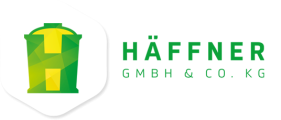Information on the New EU Chemicals Policy
Dear customers,
the preregistration phase for the so-called ′phase in′ substances has ended. Starting December 1st 2008 only preregistered or registered substances are allowed to be produced in the EU, imported or be placed on the market if their ammount of 1 tonne per year will be exceeded.
Concerning the European REACH Regulation (EG) #1907/2006 (registration, assessment, approval and restriction of chemical substances) the Hugo Häffner group is in principle in the role of a downstream user and only very rarely in the role of a lead registrant. Therefore it was the responsibility of our suppliers to preregister and register the substances delivered to the Hugo Häffner group. So fal all our suppliers have confirmed their will to preregister respectively their preregistrations.
In the case of discontinuation of delivery on the part of a supplier we will inform our customers in a timely manner.
The Hugo Häffner group confirms to act REACH conform – at the present as well as in the future. This also includes the timely communication within the supply chain that is required as per REACH (e.g. information transfer concerning the content of substances of very high concern in the Häffner distribution program).
The REACH Regulation lays down that substances posing a significant potential hazard need to go through a process of approval. These substances will be referred to in the so-called candidate list (Annex XIV). This process of approval examines the availability of alternatives and their potential risk and at the same time the economic and technical feasibility.
You can see the candidate list on the following ECHA website: https://echa.europa.eu/de/candidate-list-table
The Hugo Häffner group will state substances of the candidate list on their safety date sheets (Chapter 3) if such substances are included in their products by more than 0.1 percent.
Best regards
The Häffner Team
Purpose and REACH
The intended purposes as reported by our customers will be – as request per REACH – communicated ′upstream′ along the supply chain. Though the registrants respectively manufactures only have a duty to inform the downstream user if an intended purpose cannot be taken into account. There is no duty on the part of the supplier to confirm an intended purpose as part of the registration dossier before a safety assessment (CSA) can be worked out. A purpose is only officially confirmed when the registration dossier has been accepted. The approved purposes will then be communicated via exposure scenarios in the extended safety date sheets. Safety data sheets and exposure scenarios need to be only worked out for substances and mixtures that have been classified as dangerous though.
We hope for your understanding if we cannot issue a confirmation in every single case. We are directly subject to the REACH Regulation. It is a matter of course to fulfil all requirements of the existing chemicals legislation. Should you require detailed information concerning REACH for a specific product please feel free to contact our internal REACH expert Mr. Stöckle.
E-Mail: markus.stoeckle@hugohaeffner.com
REACH Authorization Procedure
Substances of a very high concern will be included in the REACH Regulation Annex XIV gradually. After an inclusion has been successful the substances are not allowed to be brought into circulation or used unless the respective company has received authorization.
Substances of Very High Concern
Substances of Very High Concern are:
- carcinogenic, mutagenic or teratogenic substances (CMR) of the categories 1 and 2
- persistent, bioaccumulative and toxic (PBT) or very persistent and very bioaccumulative substances (vPvP) in accordance with the criteria in the REACH Regulation Annex XII and / or
- -in particular cases- identified substances for which there is scientific evidence that they probably have serious and alarming effects on human health or on the environment, such as the abovementioned substances, e.g. substances with endocrine disrupting properties.
Grounds and Procedures for Regulations
Dangerous substances of particular concern: their regulation is vital as their potential effect on people and environment could be severe and most of the time irrgeversible. For subtances which are subject to authorization there is no minium quantity. The authorization process requires a thorough assessment. The assessment´s results will be discussed in-depth before the appropriate decisions are taken.
Authorization in Practice
The authorization process consists of 4 steps. Industry has particular obligations in the third step. For steps 1 and 2 all interested groups have the possibility to make a contribution though.
Step 1Step 2Step 3Step 4
Step 1: Identification of Substances of Very High Concern (by the Authorities)
Substances of very high concern can be identified according to the criteria mentioned before. This will be achieved through the relevant authorities of the member states or the agency (on behalf of the European Commission), namely by preparing a dossier according to Annex XV. Interested groups can comment on substances for which a dossier is present. The outcome of this identification preocess is a list of identified substances, which are candidates for prioritization (candidate list). This list will be published by the agency and updated periodically.
Step 2: Prioritzing (by the Authorities)
In a next step the substances on the candidate list will be prioritized in order to determine which substances should be subject to authorization. During this phase interested groups are called upon to comment. At the end of the authorization process it will be desided:
- if a substance will be subject to authorization,
- which purposes of the listed substances won´t need authorization (because sufficient controls established by other legislation are already in place),
- the expiry date from which a substance is not allowed to be used anymore without authorization.
Step 3: Application for Authorization (by Industry)
Applications for authorization need to be handed in within the legal deadline for each purpose that is not excluded from the authorization. Among other things these must include:
- an chemical safety report which covers the risks based on those substance properties that caused the inclusion of the substance in the authorization system (unless not already handed in during registration),
- an analyses of potential alternative substances or technologies that are already in the planning stage or in progress for the development of such alternatives – where appropriate, including information on research and development projects.
If the analyses shows that a suitable alternative exists the applicant has to present a substitution plan in which it needs explaining in what way the respective substance shall be replaced by the alternative. During the assessment of the existing alternatives all relevant factors will be considered, for instance if the respective alternative lowers the overall risk and if it is economically and technically viable for the applicant.
In addition, the appliccant can add a socio-economic analysis to the application. Such an analysis is mandatory if appropriate control of potential risks cannot be proven and if nu suitable alternative is available. The applications are subject to charge. The agency seeks expert advice which the applicant can nomment on.
Step 4: Granting Authorization (by the European Commission)
The authorization will be granted if the applicant can prove that risks resulting out of the use of the substance can be controlled appropriately. This adequate control route does not only apply to substances for which a threshold value cannot be determined but also for substances with PBT or vPvB properties.
Even if risks cannot be controlled appropriately authorization is possible provided that the socio-economic value exceeds the risks and that no suitable alternative substances and technologies exist.Downstream users are only allowed to use such substances for the authorized purposes.
Therfore they have to:
- either obtain the substance from a company that has received the authorization for the respective purposes as well as fulfils the requirements for the authorization and inform the agency that they use the authorized substance,
- or apply for the authorization for their own purpose themselves.
If the analysis shows that a suitable alternative exists, the applicant shall submit a substitution plan explaining how the substance concerned is to be replaced by the alternative. In assessing the alternatives available, all relevant aspects shall be taken into account, such as whether the alternative in question reduces the overall risk and whether it is economically or technically viable for the applicant. The applicant may also attach a socio-economic analysis to the application. Such analysis is mandatory if adequate control of the risks cannot be demonstrated and no suitable alternative is available. The applications are subject to a fee.
The Agency shall seek expert opinions on all applications, which the applicant may comment on.
Review: All authorizations will be reviewed after a certain amount of time that is to be determined as the case arises.
Article 33 of the REACH Regulation regulates the obligation to pass on information on substances in goods.
- every supplier of a good that includes a substance meeting the criteria of article 57 and determinedaccording to article 59, paragraph 1 in a concentration of more than 0,1% weight by weight provides the recipient of the good with sufficient information on the secure use of the good, at least though the supplier states the name of the respective substance.
- upon request of a consumer, every supplier of a good that includes a substance meeting the criteria of article 57 and determined according to article 59, parafraph 1 in a concentration of more than 0,1 % weight by weight provides the consumer with sufficient information on the secure use of the good, at least though the supplier states the name of the respective substance.





![hh_logo_kleinhome[1] hh_logo_kleinhome[1]](https://hugohaeffner.com/wp-content/uploads/2019/07/hh_logo_kleinhome1.png)